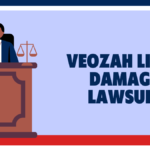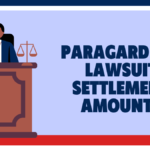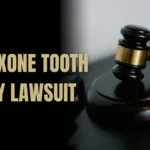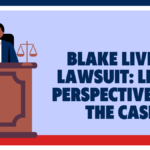
From the construction materials of old buildings to factory equipment, asbestos has been a silent threat often lurking in plain sight. But what exactly is it? Asbestos refers to a group of naturally occurring minerals that were widely used for their fire-resistant properties and durability. However, underneath its seemingly innocuous facade lies a dangerous reality that has affected countless lives.
This article aims to unravel the legal conundrum surrounding asbestos in Westminster by shedding light on its detrimental health effects and potential implications for all those involved. As we delve into this complex issue, it becomes clear why understanding the far-reaching consequences of asbestos exposure is vital not only for residents but also for concerned citizens and parties embroiled in related lawsuits.
Is Westminster Asbestos Legal Question, The harmful effects of asbestos are not confined solely to those who come into direct contact with it; they extend beyond physical proximity. Inhalation or ingestion of airborne asbestos fibers can lead to severe lung diseases such as mesothelioma, asbestosis, and lung cancer – afflictions known for their insidious nature and high fatality rates. It is essential to understand these devastating health risks associated with exposure as we navigate the intricate web of legal complexities surrounding Westminster’s asbestos situation.
So strap yourself in, because throughout this article we will examine how decades-old decisions made regarding asbestos continue to shape our present circumstances. We’ll explore various perspectives while exploring potential outcomes for individuals impacted by this invisible enemy masquerading under layers upon layers of bureaucracy. Get ready – your journey through the Westminster Asbestos Situation is about to begin!
History of Asbestos Use in Westminster
Asbestos, a naturally occurring mineral known for its heat-resistant and insulating properties, has been used across various industries in Westminster for decades. Dating back to the early 20th century, asbestos was widely utilized in construction materials such as insulation, roofing shingles, cement pipes, and floor tiles. It was also prevalent in manufacturing processes involving textiles, automotive parts, and shipbuilding.
The consequences of widespread asbestos use have become apparent over time. In retrospect, past exposure to this hazardous material raises significant public health concerns. The inhalation of airborne asbestos fibers can lead to serious respiratory diseases such as mesothelioma and lung cancer. Unfortunately, many who worked with or lived near asbestos-containing materials in Westminster were unwittingly exposed to these harmful fibers.
A particularly notable aspect of the history of asbestos use within local industries is the lack of awareness surrounding its dangers during earlier periods. At that time, information about the long-term health effects associated with asbestos exposure was limited or suppressed by certain companies due to commercial interests. This lack of knowledge not only put workers at risk but also delayed important regulatory action necessary for protecting public health and safety.
It is essential to acknowledge this historical context when exploring the legal conundrum surrounding asbestos in Westminster today. Understanding how and why asbestos came into widespread use helps us appreciate the urgency for current regulations regarding its removal from buildings and compensation for affected individuals.
Current Regulatory Measures (Westminster Asbestos Legal Question)
Existing laws and regulations play a crucial role in governing the use and demolition of asbestos within municipal boundaries, including Westminster. These measures aim to protect public health and safety by addressing potential hazards associated with this harmful substance. At present, there are several key regulatory frameworks that provide guidelines for handling asbestos.
One important regulation is the Control of Asbestos Regulations 2012, which sets out specific requirements for managing asbestos in non-domestic properties such as commercial buildings or workplaces. It covers various aspects ranging from risk assessments and control measures to training and duty holder responsibilities. This legislation places an emphasis on preventing exposure to asbestos fibers during renovation or demolition activities.
In addition to national regulations, local authorities may also have their own guidelines and restrictions regarding asbestos management within their jurisdiction. For example, the Westminster City Council has implemented specific protocols for handling asbestos-containing materials (ACMs) during construction or refurbishment projects. Such measures ensure compliance with existing regulations while addressing the unique challenges faced by a densely populated urban area like Westminster.
Asbestos-related regulations continue to evolve over time as new research emerges and best practices are established. Recent updates in guidelines may include stricter controls on certain types of ACMs or revised procedures for demolishing buildings containing asbestos materials. These changes reflect an ongoing effort to enhance public safety by minimizing exposure risks associated with this hazardous material.
Legal Question Surrounding Responsibility
One of the central aspects of the Westminster asbestos situation revolves around determining who should be held accountable for the presence and removal of this hazardous material. This raises important legal questions about liability and responsibility. Should property owners bear the burden for managing asbestos on their premises? Are contractors responsible for ensuring safe handling and disposal during renovations or demolitions? Or perhaps local authorities should take the lead in creating comprehensive regulations to address this issue.
When it comes to property ownership, there is a clear argument that owners have a duty to maintain safe conditions within their buildings. This includes identifying and addressing any potential hazards like asbestos. However, complications arise when multiple parties are involved in a single building, such as landlords and tenants, making it difficult to assign responsibility easily.
Contractors also play a crucial role in managing asbestos during construction activities. They must adhere to safety protocols established by regulatory bodies like OSHA (Occupational Safety and Health Administration) to prevent exposure risks not only for themselves but also for workers and occupants of affected spaces. If contractors fail to fulfill these obligations properly, they may face legal consequences.
Furthermore, local authorities are often expected to oversee regulation implementation within their jurisdictions. In cases where inadequate regulations exist or enforcement is lax, they can be challenged legally if their actions can be shown as contributing factors leading to harmful exposure incidents.
As you can see from these examples, unraveling the legal conundrum surrounding responsibility regarding asbestos management requires careful analysis of various stakeholders’ roles and obligations. Only by doing so can we determine who should ultimately bear accountability for preventing exposure risks associated with this dangerous substance.
Potential Implications for Affected Parties
a) Health Risks
One of the most concerning implications of asbestos in Westminster is its potential health risks, particularly for individuals exposed to high levels of airborne asbestos fibers. Asbestos has long been linked to severe respiratory illnesses, such as mesothelioma and lung cancer. The microscopic fibers released by deteriorating asbestos-containing materials can easily be inhaled or ingested, posing a significant threat to human health.
For those who have been exposed to hazardous levels of asbestos over an extended period, the consequences can be devastating. Symptoms may not manifest immediately and could take years or even decades to develop into life-threatening diseases. This highlights the importance of vigilance when it comes to identifying and addressing areas contaminated with asbestos in residential, commercial, and public buildings throughout Westminster.
b) Property Value
Another notable implication that arises from the presence of asbestos in properties is its impact on resale value. Prospective buyers are increasingly cautious about purchasing homes or commercial spaces with known or suspected asbestos contamination. The association between this harmful substance and negative health effects has made people more aware of potential risks associated with living or working in such environments.
Properties found to contain traces of asbestos may experience depreciation in their market value due to necessary remediation costs involved in ensuring a safe living or working environment for occupants. Real estate agents often advise homeowners selling properties containing any form of potentially hazardous material like asbestos should disclose this information upfront as transparency is seen as vital among property buyers.
These two aspects highlight some crucial considerations surrounding the legal conundrum being faced by residents affected by Westminster’s asbestos situation – both in terms of personal well-being and financial concerns related to their properties’ values.
Legal Action
For individuals and communities affected by asbestos exposure in Westminster, legal action can be a means to seek compensation for damages or pursue remediation efforts. Asbestos-related lawsuits have been on the rise in recent years, with many victims successfully receiving settlements or verdicts in their favor. These legal actions not only provide financial relief for those suffering from asbestos-related illnesses but also draw attention to the responsibility of companies and institutions involved.
One notable precedent is the case of Borel v. Fiberboard Paper Products Corporation in 1973, where Clarence Borel filed a lawsuit against multiple asbestos manufacturers after being diagnosed with mesothelioma. This landmark case paved the way for future asbestos claims, establishing that companies could be held liable for negligence regarding asbestos-containing products. Since then, numerous other lawsuits have followed suit, resulting in substantial compensation payouts and stricter regulations surrounding asbestos use.
Currently, there are ongoing cases related to asbestos claims specifically linked to properties and buildings within Westminster. Residents who have been exposed are seeking justice through legal channels as they continue to grapple with health concerns caused by this silent menace. These cases highlight how crucial it is for affected parties to understand their rights and consider taking legal action as a means of holding accountable those responsible for exposing them to harmful substances like asbestos.
Overall, legal action has become an indispensable tool for individuals seeking compensation and justice due to the harm caused by asbestos exposure. The success stories from past lawsuits demonstrate that pursuing such actions can yield positive outcomes not just at an individual level but also contribute towards raising awareness about the dangers of living amid unsafe environments contaminated with this hazardous material.
Recommendations and Resources for Affected Parties
Seeking professional assistance is crucial for individuals impacted by asbestos exposure in Westminster. Environmental consultants can provide guidance on how to assess the presence of asbestos in homes, workplaces, or public buildings. These professionals have the expertise to conduct thorough inspections and testing, ensuring accurate identification of potential risks.
In addition to environmental consultants, it is highly recommended that affected parties consult lawyers who specialize in asbestos litigation. These legal experts possess extensive knowledge of the laws and regulations pertaining to asbestos-related cases. They can offer valuable advice on pursuing legal action against responsible parties for compensation or seeking justice through class-action lawsuits.
For individuals affected by asbestos exposure within Westminster, there are various resources available that can provide support during this challenging time. Support groups play a crucial role in offering emotional and practical assistance to those dealing with the consequences of asbestos-related illnesses. These groups create a space where individuals can share their experiences, obtain information about treatment options, and connect with others facing similar challenges.
Furthermore, local government agencies may offer programs or services specifically designed to aid those impacted by asbestos exposure. It is advisable for affected parties to inquire about any available financial assistance programs or healthcare initiatives aimed at supporting them throughout their journey towards recovery.
By seeking professional help from environmental consultants and lawyers specializing in asbestos litigation while also utilizing relevant resources such as support groups and government initiatives within Westminster, affected parties can navigate this difficult situation with greater ease and potentially receive the necessary support they need during this time.
Conclusion:
In conclusion, the legal questions surrounding asbestos in Westminster present a complex and ongoing conundrum. We have seen how historical decisions, conflicting regulations, and fragmented responsibilities have contributed to the current state of confusion. It is clear that affected parties, whether they are residents or potential plaintiffs or defendants in lawsuits, need to navigate this legal landscape with caution and seek expert advice.
Moving forward, it is essential for everyone involved to stay informed about any updates or developments regarding asbestos in Westminster. Continued awareness and vigilance are necessary to ensure that appropriate actions are taken to protect public health and uphold justice. This issue calls for collaboration between government agencies, legal experts, advocacy groups, and affected individuals to address the remaining uncertainties surrounding asbestos exposure in Westminster.
As we conclude our exploration of the legal conundrum surrounding asbestos in Westminster, let us remember the importance of transparency and accountability when dealing with such hazardous substances. By learning from past mistakes and advocating for stricter regulations and clearer guidelines, we can work towards a safer future where the rights of those affected by asbestos-related issues are protected.
For More Info: https://trendtrackernews.com/









